Prague – Winter Wonderland
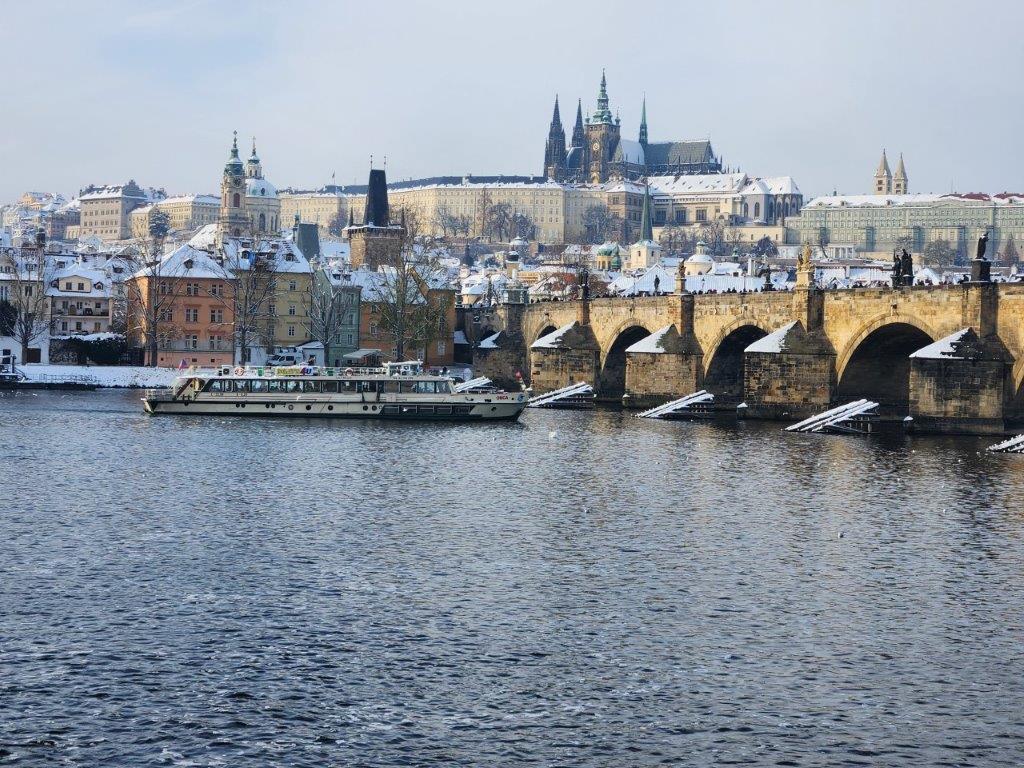
When we thought of Prague – the image was always one of a white Christmas. It was appropriate then that our visit to Prague should be at Christmas time. In short, Prague proved to be such an amazing winter wonderland – so glad we went.
History
We knew very little about Prague. Here is a little background about this wonderful city. –
- After the collapse of the Roman Empire, the Germanic tribes settled in the region and during the sixth century the Slavic tribes established themselves in the area. By the ninth century, the city was called Prague.
- In 950 the area became part of the Holy Roman Empire as an autonomous empire.
- In 1526, Ferdinand I was elected King, and from this point and up until 1918 Prague’s history would be connected to Austria and the House of Hapsburg.
- With the collapse of the Austro-Hungarian Empire after World War I, the state of Czechoslovakia was created in 1918, choosing Prague as the capital city.
- In March 1939, Prague was invaded by the Nazi troops and was made a German protectorate. At the end of World War II, Prague was under the control of the Soviet Union and thus under a Communist regime.
- On the 17th November, 1989 (8 days after the fall of the Berlin wall), in Prague, students and dissidents demonstrated peacefully against the Communist Party for over a month, resulting in the end of Communist rule in the country. In 1993, Prague became the capital city of the new Czech Republic.
We love the quote from Václav Havel – the last president of Czechoslovakia and at the same time also the first president of the Czech Republic:
“Hope is not the conviction that something will turn out well, but the certainty that something makes sense, regardless of how it turns out.”
Looking back
In December 2022 we were fortunate have an opportunity to visit Vienna and experience the Christmas markets. You can read more about our time in Vienna here. With Glenda being sick for most of our time in Vienna, we were not able to take full advantage of all that was on offer. Initially, when we considered the option of going to Prague, flights and hotels were very expensive. Perseverance pays, Glenda was able to find cheap flights and reasonably priced accommodation. And so, we had a second bite at experiencing a white Christmas.
Winter Wonderland
Just before leaving, northern Europe experienced some very cold weather with lots of snow. A few airports were closed. We were a little concerned what this would mean for us. The answer – coming in to land, all we could see was a snow-covered landscape. We took a bus from the airport to the city, and WOW, it was amazing seeing everything covered in snow. It was a short walk (700m) from where the bus dropped us off to our apartment. Dragging a suitcase through the snow though is not the easiest – but hey – a worthwhile hardship for the beauty around.




We arrived at the apartment at 10h30 but our room would only be ready at 16h00. No problem, that gave us plenty of time to get out and experience the city. Fortified by coffee and cake from a nearby coffeeshop, we set off to explore the city. Whilst we had a thermal layer and jeans on, we soon found it necessary to add an additional layer. Once dressed warmly enough, we were able to enjoy being out in the snow-covered landscape. With ice covered pavements, we did have to be very careful walking.
Our apartment was located in Wenceslas square which was also where one of the Christmas markets was located. Walter found a very tasty sausage on a bread roll for lunch (Pražská klobása -Prague sausage which is a grilled, dark-red and spiced sausage). Wondering through a few of the other markets, we found that they were mostly food and drink. In comparison, the markets in Vienna had a lot more Christmas decorations and handicrafts for sale.


Two of the top attractions are the Charles Bridge and Prague Castle. With that in mind, we made our way first to the Charles Bridge and the Prague Castle.

Charles Bridge is a medieval stone arch bridge that crosses the Vltava River in Prague. Its construction was started in 1357 and finished in the early 15th century. As the only means of crossing the Vltava River until 1841, Charles Bridge was the most important connection between Prague Castle and the city’s Old Town and adjacent areas.
The bridge is 516 metres long and nearly 10 metres wide. The bridge is decorated by a continuous alley of 30 statues and statuaries, most of them baroque-style, originally erected around 1700.
Experiencing the Charles Bridge whilst covered in snow was amazing and over the time in Prague, we walked over it a few times. For the most part, it is usually very busy with many people.



Lennon Wall

After crossing the bridge, we detoured to the Lennon wall. When John Lennon was killed in 1980, this wall was covered with memorial graffiti overnight. Every night the police would paint over the graffiti and the next day it would reappear. John Lennon’s ideas gave the Czech people hope during communist rule, so this wall became a symbol of freedom.
On our way to the castle, we discovered a shop that sold thick hot chocolate and nice cakes. It was good enough that we could not resist going back a few times. A hot chocolate and cake is ok for lunch, right!

Prague Castle
Prague Castle was most likely founded in around 880. According to the Guinness Book of World Records, Prague Castle is the largest coherent castle complex in the world, with an area of almost 70,000 m². It is about 570 metres in length and an average of about 130 metres wide. A UNESCO World Heritage site, it consists of a large-scale composition of palaces and ecclesiastical buildings of various architectural styles, from the remains of Romanesque-style buildings from the 10th century through Gothic modifications of the 14th century.
What to say – the complex is vast and free to enter and walk around the outdoor areas. We spent a bit of time exploring and admiring the architecture. Again, all the snow created a magical winter wonderland. It was easy to see why this was one of Prague’s most visited attractions.



And so, eventually it was time to head back to our apartment for check-in. It was amazing how quicky 5 hours went buy. Despite the cold temperatures, we did not feel cold. It helps having warm clothing, but a big factor is also that it was windstill. In Vienna, the temperatures were higher, but with windy days, we felt a lot colder.
Our Apartment

Check-in was easy and when we got into our apartment – WOW. Knowing we had booked a comparatively cheap apartment (Hapimag Resort Prague), we were not expecting much. Well, expectations were exceeded. The apartment was bigger than expected, warm and the views amazing. The apartment even had a nice bay window where we could sit enjoying looking at Wenceslas Square. We could not have done better. free breakfast at a hotel nearby was a surprise – Bonus.
Glenda had booked a restaurant for dinner. It was close to the hotel. Walter had an enormous pork knuckle whilst Glenda had pork ribs. Both were very nice and left no space for desert or even tea or coffee. If there is one complaint it is that the food is delivered very quickly – literally within 3 minutes. So, not a long night out. Given we had been up at 5am to get our flight, it was good to get an early night.
Petrin Gardens
Following a very hearty breakfast, on our second day we explored some of the old town on our way to the Petrin Gardens which were across the Vltava River. The Petrin gardens is a large urban greenspace that consists of five interlinked gardens.

We started our walk through the gardens at the Memorial to the Victims of Communism. It was created by the distinguished Czech sculptor Olbram Zoubek. In the upper part of the memorial, you can see 7 people walking on stairs. The first person seems to be all right, but one can clearly observe that the others are missing something of their anatomy, which should symbolise the suffering of the prisoners, their courage and resilience.
At the bottom you can read: Victims of Communism 1948-1989: 205,486 convicted, 248 executed, 4,500 died in prison, 327 died during illegally crossing the boundaries and 170,938 people emigrated.
Again, with all the snow the gardens were a white wonderland, not the greenspace it would be during summer. We saw a group of school kids out sliding down the hills on a version of a toboggan. It was a little challenging getting up some of the slopes with lots of ice. Our initial plan was to walk up to the Petrin Tower. It was too icy towards the top so we just enjoyed walking through the gardens. Such beautiful views of the city from the hilltop gardens.





ST. NICHOLAS (MIKULÁŠ)
This was the 5th of December. In the Czech Republic, on the evening of 5th December, which is a day before St. Nicholas Day, you can run into St. Nicholas (or Mikuláš in Czech) accompanied by an angel and a devil. He usually walks around and asks kids how they behaved during the year. Good kids are rewarded by the angel with candy and naughty kids receive from the devil a lump of coal or potatoes instead. Not to traumatize them though, they also usually get some treats! We enjoyed seeing the spectacle.
Markets outside the old town
After two big days and with inclement weather predicted, we took an opportunity to visit two markets outside the old town at Peace Square and Tyl Square. They were not too far from where we were staying if we needed to head back. These Christmas markets were not as busy as some of the others we had visited – well not in the morning anyway. Glenda was able to have a video chat with one of her friends (Kathy) in South Africa whilst we were at one of the markets.
We did find a vánočka which we bought for lunch. It is a braided bread, adorned with raisins and almonds. This sweet bread, which is a bit like a brioche, gets its name from the word Vánoce, which means Christmas in Czech. Having enjoyed these markets, we went back in the evening for dinner. Walter enjoyed a goulash whilst Glenda enjoyed some melted cheese.



Astronomical Clock

On one of the previous days, we had tried to see the Astronomical Clock. With large crowds, we decided to go back early one morning. Going early, we got a good spot to see this marvellous clock in action. The clock was first installed in 1410, making it the third-oldest astronomical clock in the world and the oldest clock still in operation.
The astronomical clock in Prague, otherwise known as The Orloj, shows the relative positions of the Sun, Moon, Earth, and Zodiac constellations. It also tells the time, provides the date, and, best of all, provides some theatre for its viewers on the hour.
In order to provide this level of functionality, the clock is split into several distinct parts.
The first, and most striking, is its impressive and beautifully ornate astronomical dial. This represents the position of the Sun and Moon in the sky and other various astronomical details. The main stationary background to the clock’s face has a wealth of information to anyone who is able to read it. On the outermost ring of the background is a series of glyphs that are representative of ancient Czech time. Moving closer to the centre, a set of Roman numerals can be seen. Like most traditional clocks, these are used to indicate 24-hour time.
Each of the various hues of blue and brown within the main plate indicate events like sunrise, daybreak, daytime, nighttime etc as well as including various geographical information like the location of tropics and the equator. The Earth is located in the very centre of the dial. Superimposed on the main astrolabe is the Zodiacal ring. This displays the various signs of the zodiac and is intended to mark the location of the Sun on the ecliptic.
Just above the main clock are two blue doors that open to reveal “The Walk of the Apostles”. Between 9 am and 9 pm, each hour, on the hour, the window of the clock in the upper part shows the 12 apostles moving. Simultaneously, the surrounding sculptures on the device are set in motion. One of the moving figures carrying an hourglass in his hand personifies Death. Another moving figurine has a mirror, representing Vanity. The skeleton rings, rotates an hourglass in order to show to the Turk that his lifetime is at the end. He shakes his head.
Letna Park
Having enjoyed the Petrin Gardens, we embarked on another urban greenspace walk, this time through the Letna Park. Being on a hill, it too had great views over Prague. This park is less visited and used by locals for exercise and in summer for picnicking. We saw a group of school children on Ski’s being led by their PE teacher.
An interesting feature is the Metronome that is standing on the place of former Stalin’s monument. A statue of Stalin was completed in 1955 and destroyed “secretly” in 1962. The Stalin monument was replaced by the Metronome in 1991.
With the cold weather the lakes in the park were frozen. We were not brave enough to try walking on them.


River Walk
Our last day was mostly centred around exploring the river and its islands. We started the day by viewing the memorial to Jan Palach which was near our apartment. The modest memorial is located a few metres from the fountain in front of the National Museum on Wenceslas Square in Prague. Here on 16 January 1969, Jan Palach poured petrol over himself and set himself on fire. His action was a political protest after the Soviet Union invaded his native Czechoslovakia. The cross faces the place where the burning Jan Palach fell to the ground.

After this sombre start, we headed off to the river where we enjoyed walking along the river and also exploring some of the islands. By this stage the ground was more ice than snow. Very treacherous for walking. We managed without any mishaps.




At one point walking along the river, we came across a number of café’s built in under the road which was around 10m above the path. What was amazing were the large round glass entrances. It is hard to imagine how they were manufactured and just how much they weigh. Nerdy stuff, I know.
On our last night we went out to another restaurant. The restaurant was a little way from our apartment and it was snowing. Kind of nice and novel for people like us from sunny climates. Walter again had pork knuckle and a “small” beer. Glenda similarly again tried some pork ribs.

SANTA?
We will end with this titbit. Who usually brings you Christmas presents? Santa Claus? False! In the Czech Republic, it is Baby Jesus (Ježíšek). What is interesting is that no Czech person knows what he actually looks like. He arrives in a separate room from where dinner is eaten. A ring of a bell notes his arrival and children rush to the room to find presents, etc.
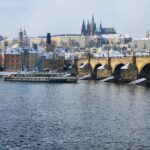
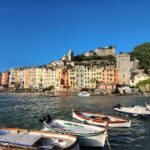
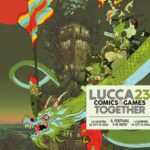
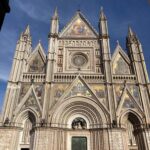
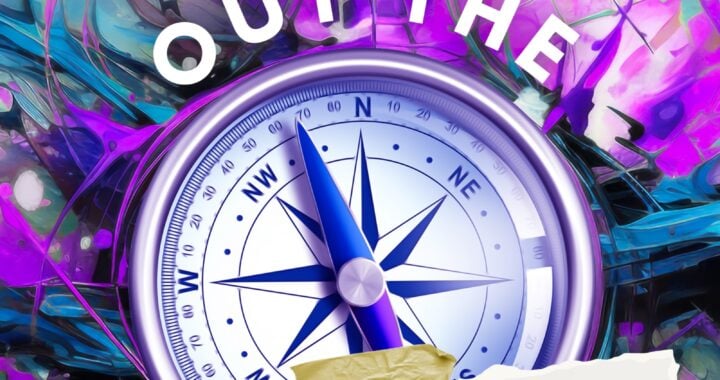 Book Cover Reveal
Book Cover Reveal  Sneak Preview
Sneak Preview  Porto Venere – gateway to the Cinque Terre
Porto Venere – gateway to the Cinque Terre 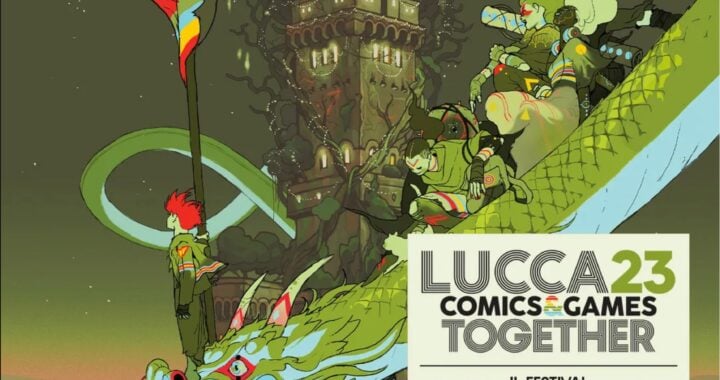 Lucca Comics & Games 2023
Lucca Comics & Games 2023 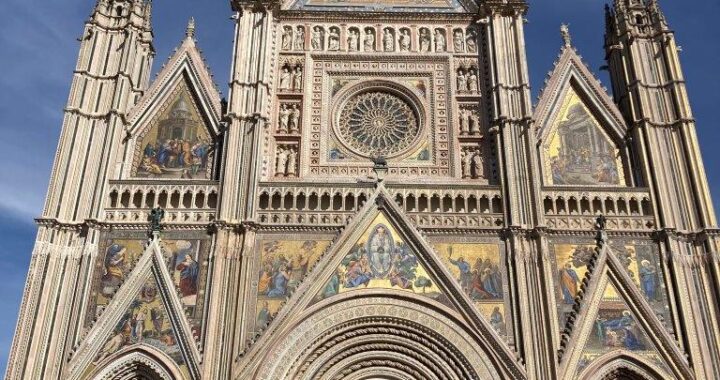 Orvieto – 6 years later
Orvieto – 6 years later  The Red City
The Red City